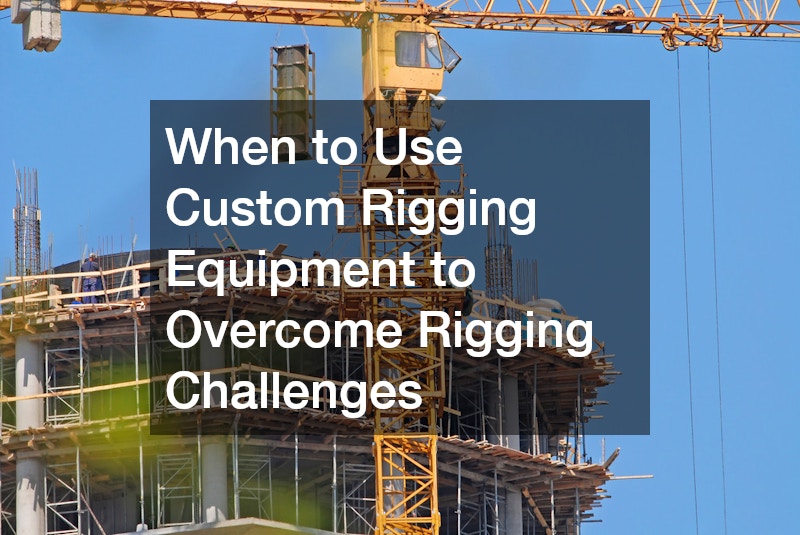Custom rigging equipment plays a pivotal role in overcoming unique rigging challenges that standard equipment cannot address effectively. Understanding when to employ custom rigging solutions is essential for ensuring safety, efficiency, and successful project completion in various industries such as construction, manufacturing, and logistics. Here are key scenarios when you need custom lifting equipment to overcome rigging challenges:
Handling Unconventional Loads
One of the primary reasons to use custom rigging equipment is when dealing with unconventional loads. These loads can be irregularly shaped, oversized, or unusually heavy, making them difficult to handle with standard rigging equipment.
Custom solutions, such as specially designed slings, spreader bars, and lifting beams, can accommodate the unique dimensions and weight distributions of these loads, ensuring safe and efficient handling. For instance, transporting a large piece of machinery with an irregular center of gravity may require a custom lifting beam to balance the load and prevent tipping or shifting during the lift.
Adapting to Restricted Workspaces
In many projects, space constraints pose significant challenges to rigging operations. Standard equipment may not fit into tight or awkward spaces, making it difficult to maneuver and position loads accurately. Custom rigging equipment can be designed to fit specific spatial limitations, allowing for precise handling in confined areas. This is particularly important in urban construction sites, shipyards, or industrial plants where space is limited. Custom solutions can include compact lifting devices, specialized rigging hardware, and tailored lifting plans that maximize efficiency while ensuring safety.
Meeting Specific Safety Requirements
Safety is paramount in rigging operations, and sometimes standard equipment does not meet the specific safety requirements of a project. Custom rigging equipment can be designed with enhanced safety features to address particular hazards. For example, in environments where hazardous materials are handled, custom rigging solutions can include corrosion-resistant materials, spark-proof components, or load monitoring systems to ensure safe operations. Additionally, custom equipment can be engineered to comply with stringent industry regulations and standards, providing an extra layer of safety assurance.
Enhancing Load Control and Stability
Certain rigging tasks require precise load control and stability, which standard equipment might not provide. Custom rigging solutions can offer enhanced control mechanisms, such as adjustable spreader bars, multi-point lifting systems, and specialized load balancing devices. These solutions enable operators to maintain better control over the load during lifting and transportation, reducing the risk of accidents and improving overall efficiency. For example, lifting a fragile, high-value object may necessitate a custom rigging setup that ensures minimal movement and maximum stability to prevent damage.
Addressing Unique Environmental Conditions
Projects in challenging environmental conditions often require custom rigging solutions. Extreme temperatures, high humidity, corrosive environments, or high-wind areas can affect the performance and safety of standard rigging equipment. Custom rigging gear can be tailored to withstand these conditions, incorporating materials and designs that ensure reliable performance. For instance, in offshore oil and gas operations, custom rigging equipment might be designed to resist saltwater corrosion and function effectively in high-wind conditions.
.

